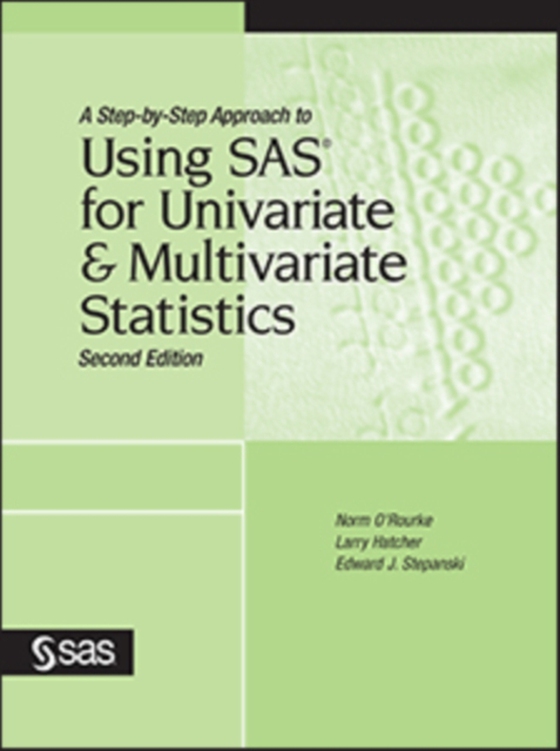
Step-by-Step Approach to Using SAS for Univariate and Multivariate Statistics, Second Edition e-bog
546,47 DKK
(inkl. moms 683,09 DKK)
Updated for SAS 9, A Step-by-Step Approach to Using SAS for Univariate and Multivariate Statistics, Second Edition, is an easy-to-understand introduction to SAS as well as to univariate and multivariate statistics. Clear explanations and simple language guide you through the research terminology, data input, data manipulation, and types of statistical analysis that are most commonly used in th...
E-bog
546,47 DKK
Forlag
SAS Institute
Udgivet
22 april 2019
Længde
548 sider
Genrer
Mathematical and statistical software
Sprog
English
Format
pdf
Beskyttelse
LCP
ISBN
9781590477779
Updated for SAS 9, A Step-by-Step Approach to Using SAS for Univariate and Multivariate Statistics, Second Edition, is an easy-to-understand introduction to SAS as well as to univariate and multivariate statistics. Clear explanations and simple language guide you through the research terminology, data input, data manipulation, and types of statistical analysis that are most commonly used in the social and behavioral sciences. Providing practice data inspired by actual studies, this book teaches you how to choose the right statistic, understand the assumptions underlying the procedure, prepare the SAS program for the analysis, interpret the output, and summarize the analysis and results according to the format prescribed in the Publication Manual of the American Psychological Association. Step by step, authors Norm O'Rourke, Larry Hatcher, and Edward Stepanski demonstrate how to perform the following types of analysis: simple descriptive statistics, measures of bivariate association, t tests for independent samples and paired samples, ANOVA and MANOVA, multiple regression, principal component analysis, and assessing scale reliability with coefficient alpha. This text is ideally suited to students who are beginning their study of data analysis, and to professors and researchers who want a handy reference on their bookshelf.
 Dansk
Dansk

